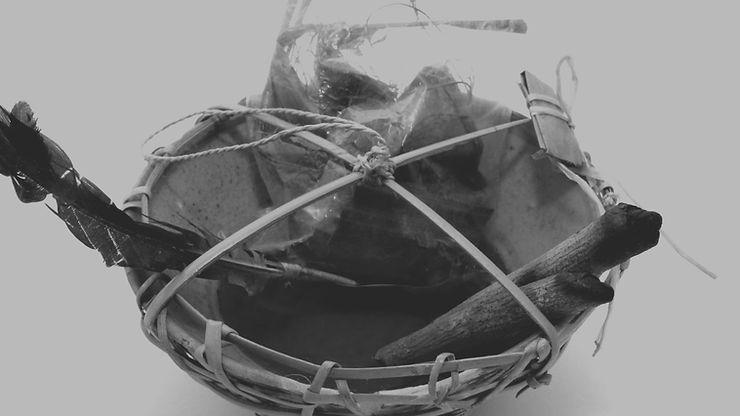
The Dayaknese are an indigenous ethnic group that lives on the island of Borneo. The Dayaknese are Borneo's largest indigenous community, possessing a complex set of cultures, dialects, and traditions. The Dayaknese retain a rich cultural legacy and heritage encompassing unique art forms, rituals, dances, music, and traditional attire. Apart from that, the Dayaknese culture is also known for its connection with nature. Knowing their devotion to nature, they often rely on agriculture. Not to mention, their ancestral connection and belief are also considered to be one of their key aspects of living.
The Mangkok Merah (red bowl) ceremony is one of several traditions that embody Dayaknese's connection to the ancestral and supernatural realms. Mangkok Merah (noun) can be interpreted as a tradition or ritual, and as a medium and as a ritual, Mangkok Merah is closely intertwined with war or conflict. However, Mangkok Merah can also act as a vessel or medium to consolidate and mobilize troops across the neighboring tribes. Apart from representing the vessel of communication, Mangkok Merah also acts as a symbol of the beginning of the war. There are two meanings of the red bowl: if there is no red stain in the bowl, it means a warning that there is danger. If the bowl has a red stain on it, it means that a war is going to be assembled.
From a more intricate point of view, Mangkok Merah was one of the most efficient means of communication during ancient times. Based on the oral history that has been passed on, the practice dates back to the Majapahit empire and their arrival in West Kalimantan. The Majapahit empire tried to take over the ancestral lands of the Dayaknese and to overcome this threatening situation, the Dayaknese tried to gather troops to defend the land using Mangkok Merah. Therefore, the occurrence of Mangkok Merah led to an agreement that wherever Mangkok Merah was circulating, those areas needed reinforcements and help.
The process of ceremony is carried out in a very sacred way; the important figures within the tribe will gather and carry out a discussion (musyawarah) of who is going to carry and dispatch the red bowl to the surrounding villages. The ritual is led by a commander of the tribe, referred to as Panglima Burung. Dayaknese believe that the chosen one should be leading the ceremony; the chosen one should embody the spirit of Panglima Burung, an ancestral being that was believed to be a helper at war.
After the spirit of Panglima Burung has entered the body of the commander, a bowl made of clay is prepared to hold on to the tools that represent the Dayaknese identity. Firstly, the red color on the bottom of the plate is made out of red tree sap to represent the bloodshed that is going to happen. Secondly, the tools are wrapped in red cloth, accompanied by rumbia leaves that signify the safety of the carrier of the bowl. Third, coals and wood fire to illuminate the designated ‘messenger’s way. Fourth, the bowl will be tied up with a rope knot made out of kepuak skin (wood fiber from the kepuak tree) that serves as a symbol of unity. Fifth, chicken feathers that act as a symbol of agility are fast like a bird. Lastly, a ginger root completed the whole element of the plate, representing the allegory of courage. After the objects are complete and laid on the plate, the commander will bring Mangkok Merah to a panyugu (Dayaknese sacred altar).

Fig. 1: Panyugu (Source: Google Images)
If you address the ancestral spirit for guidance, then supernatural signs will show up naturally, though only the commander can interpret these signs. This ritual is carried out as a last resort in urgent and life-threatening situations. This ritual does not happen often, but when it is assembled, it can cost a lot of lives. One of them was during the Second World War, when Indonesia was fighting the Japanese occupation. Following Tragedi Mangkok Merah 1967, when Chinese ethnic communities were expelled from the Dayaknese territories, political issues ignited, with Chinese communist guerillas from Sarawak seizing the Dayaknese ancestral land, the Dayaknese population opposing the formation of the Federation of Malaysia in West Kalimantan, and so forth.
Just like many ethnic tribes in Indonesia, the Dayak people have historically experienced a variety of obstacles, including colonization, deforestation, land rights, and political conflicts. There has been a rising realization in recent years of the need to conserve Dayaknese culture and protect their ancestral lands. Efforts have been made in Dayak villages to promote cultural heritage, ecotourism, and sustainable development. As a whole, the Dayaknese play a crucial role in Borneo's rich cultural heritage and indigenous heritage.


.png)
Comments